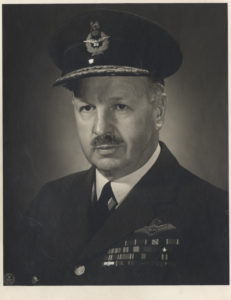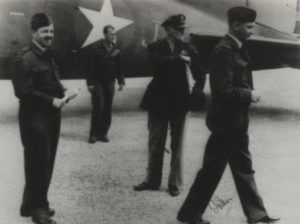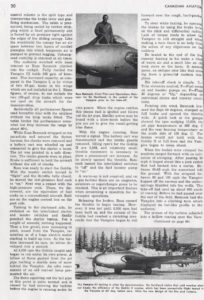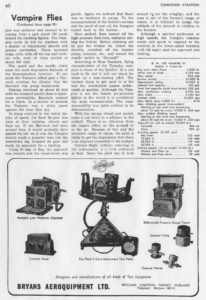Wilfred Austin Curtis
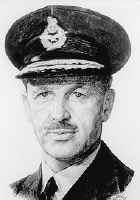
Birth Date: August 21, 1893
Birthplace: Havelock, Ontario
Death Date: August 14, 1977
Year Inducted: 1984
Awards: CB; CBE; OC; DSC*; ED; CD; LLD (Hon)*; D MilSc (Hon)
His life-long commitment to the Royal Canadian Air Force and to flying in Canada, coupled with unusual personal, gifts of leadership, vision and persuasive ability, have all been of outstanding benefit to Canadian aviation
The First World War
Wilfred Austin Curtis, C.B., C.B.E., O.C., D.S.C.*, E.D., C.D., LL.D. (Hon), D.Mil.Sc. (Hon), was born in Havelock, Ontario, on August 21, 1893. He was educated in Toronto and in 1915 joined the infantry of the Canadian Army. He requested transfer and returned from overseas to take flying lessons at the Curtiss Aviation School in Toronto at his own expense. He graduated August 11, 1916, and returned overseas, joining the Royal Naval Air Service (RNAS) as a fighter pilot.
In 1917 Curtis was promoted to Captain and awarded the Distinguished Service Cross (D.S.C.) for his skill and courage. In 1918 he was awarded a Bar to the D.S.C. He proved his worth as a highly successful fighter pilot by shooting down 13 enemy aircraft, confirmed, and 3 probables. He transferred to the Royal Air Force (RAF) in April of 1918, but relinquished his commission because of ill health in June of 1919.
A Passion for Military Aviation
On his return to Canada Curtis maintained his interest in military as well as civil aviation. During the late 1920's and early 1930's, he served as an officer in the Toronto Scottish Regiment Reserve. For some time there were no non-permanent military aviation positions available. However, when the opportunity presented itself in 1933, he became involved in the formation of No. 110 (Army Go-operation) Squadron. He became Officer Commanding in 1935 and initiated experimental air operations in mid-northern Ontario. In 1939 he founded and organized the Canadian National Air Show at Toronto.
Wing Commander Curtis was called to active duty in the Royal Canadian Air Force (RCAF) on September 1, 1939, and served with distinction in many capacities throughout World War II. In 1939 he was assigned to select air field locations in Canada for the British Commonwealth Air Training Plan (BCATP). He was named Commander, Order of the British Empire (C.B.E.) in 1943 for his outstanding work in promoting working relationships between the RCAF and RAF in the development of the BCATP.
He was, for a period/Deputy Commander of the RCAF overseas, headquartered in London, England. As a member of the RCAF Air Council, and as the Canadian member of the joint Canada-U.S. Air Council, he displayed his knowledge of air command and strategy. He received the Efficiency Decoration (E.D.) in 1945, and was named Companion of the Most Honourable Order of the Bath (C.B.) in 1946.
After the Wars
In 1947 Curtis was appointed Chief of Air Staff, and at this time guided the RCAF through the difficult stages of reorganization which followed the war and through the expansion of Canada's participation in the Korean conflict and the North Atlantic Treaty Organization (NATO). He received French, American and Italian decorations in recognition of his contributions.
Air Marshal Curtis had a great interest in the development of the Canadian aircraft industry. During his term of office, he continually and successfully directed his efforts to secure money for experimental work on and production of a jet trainer and twin-engine fighters, the CF-100 and the CF-105, suitable for interception operations in the northern Canadian climate. Early in the Cold War, he convinced the federal cabinet that the RCAF should make a major contribution to the North Atlantic Treaty Organization (NATO). This resulted in a force of twelve F-86 Sabre jet squadrons being dispatched to Europe. This contribution of 300 front line aircraft was part of the principal air defence force against the Soviet threat on that continent during the 1950's. He remained Chief of Air Staff until his retirement in January of 1953.
After the RCAF
On his retirement from the RCAF, Curtis accepted the position of Vice-Chairman of Hawker Siddeley Canada, where he continued to have a substantial impact on the development of aviation in Canada. He was appointed to the Board of Directors ofA.V. Roe Canada Ltd. in June 1953, and served until the demise of the Arrow in February 1959.
He devoted time to other aviation interests. He was President, and later, Grand President of the RCAF Association, and was appointed the Honorary Wing Commander of 400 (City of Toronto) Squadron, the old 110 squadron he had commanded in the late 1930's. He was Chairman of the committee which formed York University and was elected its first Chancellor in 1960.
Honorary Doctor of Laws degrees (LL.D.) were conferred on him by Western University (1948) and York University (1968). He received an Honorary Doctor of Military Science degree from Royal Military College, Kingston, Ontario, in 1963. In 1967 he was named Officer of the Order of Canada (O.C.). Curtis died in Toronto, Ontario, on August 14, 1977.
Air Marshall Wilfred Austin Curtis was looked upon as the "Father of Canada's Post War Air Force". Through his drive, interpersonal skills, sense of humour, understanding of aviation and effective leadership, the RCAF became a well-knit, effective and efficient fighting force.
Wilfred Austin Curtis was inducted as a Member of Canada's Aviation Hall of Fame in 1984 at a ceremony held in Edmonton, Alberta.
News Stories
To return to the Inductee Page, please click here.

